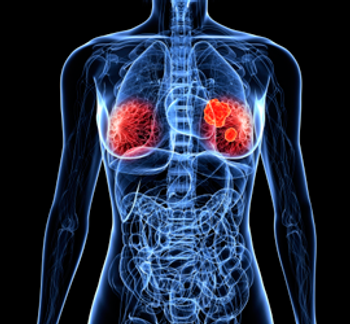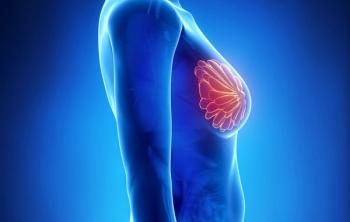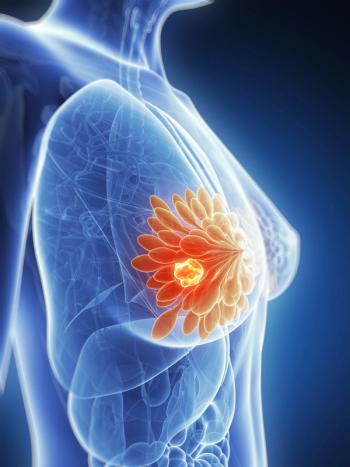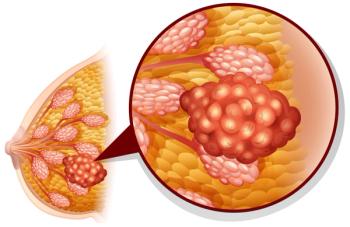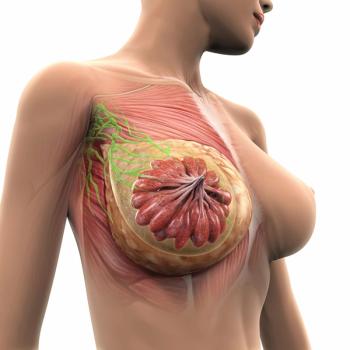
Oncology NEWS International
- Oncology NEWS International Vol 8 No 3
- Volume 8
- Issue 3
Questionnaire Effectively Assesses Nutritional Status
COLUMBUS, Ohio-A large research study has validated a short questionnaire for cancer patients designed to assess nutritional risk and to establish a triage system for intervention, Faith Ottery, MD, PhD, president of Ottery & Associates, Oncology Care Consultants, said at the Fourth Annual Congress of the Society for Nutritional Oncology Adjuvant Therapy (NOAT). Dr. Ottery founded NOAT in 1993.
COLUMBUS, OhioA large research study has validated a short questionnaire for cancer patients designed to assess nutritional risk and to establish a triage system for intervention, Faith Ottery, MD, PhD, president of Ottery & Associates, Oncology Care Consultants, said at the Fourth Annual Congress of the Society for Nutritional Oncology Adjuvant Therapy (NOAT). Dr. Ottery founded NOAT in 1993.
The study, sponsored by NOAT, showed the effectiveness of the Patient-Generated Subjective Global Assessment (PG-SGA) as an inexpensive, easy-to-use tool for nutritional assessment. The volunteer research study, begun in 1996, included nearly 2,000 patients from 33 sites. Patients with various cancers, as well as patients with chronic renal failure, were included.
The one-page PG-SGA includes questions for the patient regarding weight change, food intake, participation in activities of daily living, and symptoms that have prevented the patient from eating well. The clinician scores each section of the questionnaire and adds those scores together.
The scores are used to evaluate nutritional risk and to assign the patient to one of four intervention pathways: no intervention; patient education and, if necessary, symptom management; aggressive oral nutrition; and enteral/parenteral nutrition triage with an interdisciplinary team.
Although 60% of patients who completed the PG-SGA reported no problems eating, 55% of this group checked off one or more nutrition impact symptoms on the questionnaire, including mouth sores, constipation, pain, and nausea. Notably, both patients and clinicians rarely think of such symptoms as affecting nutrition, Dr. Ottery said. The PG-SGA scoring system, however, considers the presence of these symptoms in its evaluation.
Overall, the majority of nurses and dietitians who participated in the study agreed with the interventions recommended to patients based on their PG-SGA scores. One area of substantial disagreement, however, concerned patients who received high scores.
A high score indicated the need for aggressive nutritional intervention. Thirty-two percent of clinicians disagreed with this triage score and noted that they believed high-scoring patients need better symptom management rather than nutritional intervention, Dr. Ottery said. As a result, additional emphasis on symptom management was added to the intervention pathways.
The PG-SGA is widely used by members of the Oncology Nursing Society and has been accepted as the standard for oncology patients by the American Dietetics Association, Dr. Ottery said.
Articles in this issue
over 26 years ago
Strong Upsurge in HIV and Tuberculosis Predictedalmost 27 years ago
NCAB Urges Repeal of Law Requiring Research Data Disclosurealmost 27 years ago
Response to Ontak Leads to Improved QOL in CTCLalmost 27 years ago
Medicare Will Phase in Risk-Adjusted HMO Payments Over 5-Year Periodalmost 27 years ago
Patients Need to Understand Cancer Testing Limitationsalmost 27 years ago
Assessing the Value of the Pain Intensity Assessment Toolsalmost 27 years ago
More Than 500 Clinical Practice Guidelines Now Available On-linealmost 27 years ago
Inefficient Burning of Fossil Fuels Puts Children at Riskalmost 27 years ago
IOM Urges Replacing Race With Ethnicity in Cancer StudiesNewsletter
Stay up to date on recent advances in the multidisciplinary approach to cancer.


